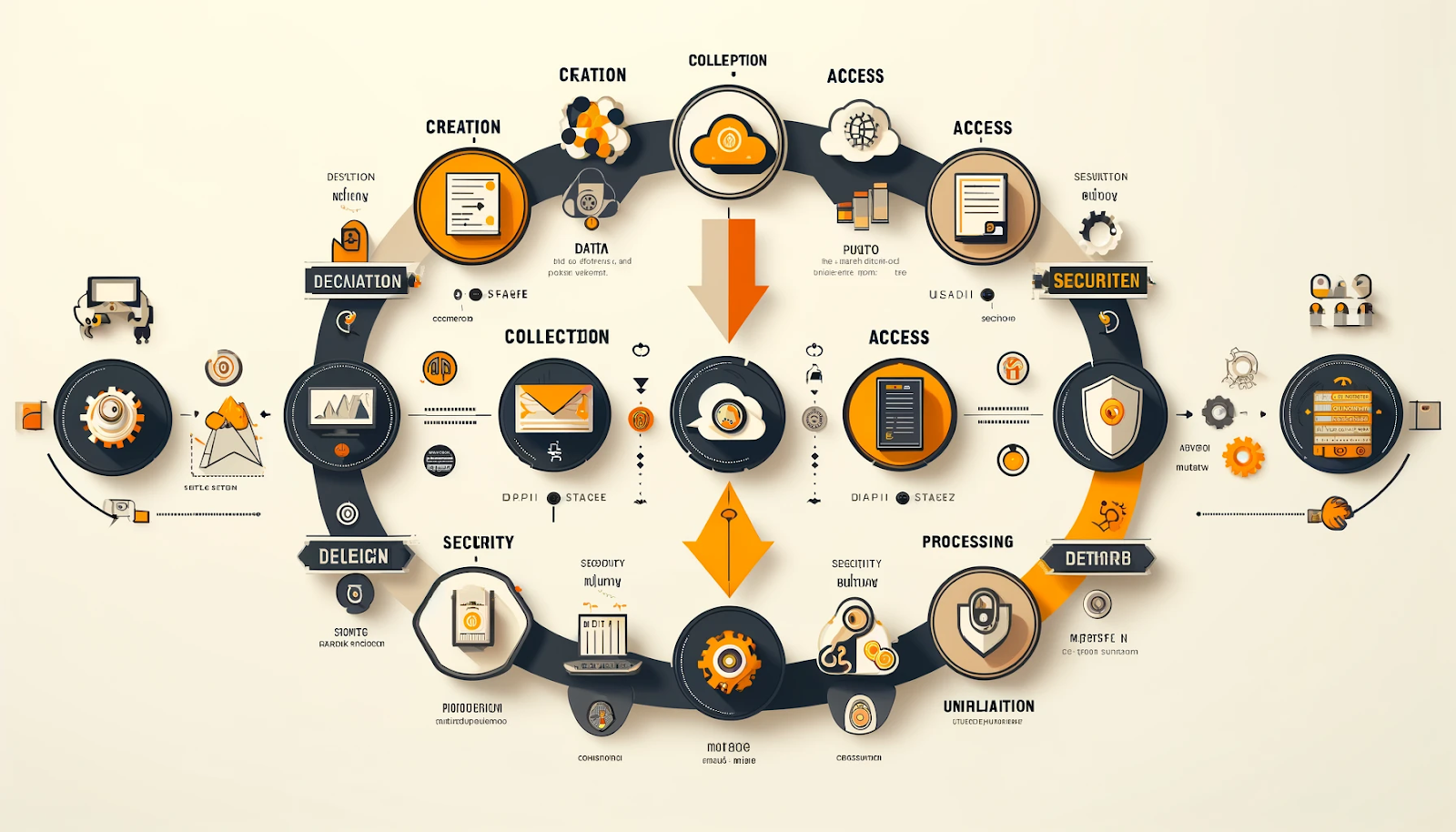Why is a game of Scrabble good for your ServiceNow project?
What is Scrabble? Scrabble is a word building game. Up to four players draw seven letters and create words out of them. There is a dedicated...
Wioletta Żyniewicz-Kwiatkowska • 7 min read • Aug 16, 2024

Table of Contents
In today's data-driven world, protecting employee privacy is no longer an option but a necessity. Organizations face a growing landscape of privacy regulations, such as GDPR, and the ever-increasing risk of data breaches. Amidst these challenges, ServiceNow HR Service Delivery (HRSD) is a powerful tool for safeguarding sensitive employee information and ensuring compliance with global privacy standards.
This comprehensive guide delves into the key strategies for leveraging ServiceNow HRSD to enhance employee privacy within your organization. We'll explore how to establish robust access controls, implement comprehensive data auditing, secure data with encryption and proper lifecycle management, develop and enforce data breach response protocols, and foster a culture of data privacy awareness. By implementing these measures, you can effectively protect your employees' data, build trust, and gain a competitive edge in the privacy-conscious marketplace.
Here are the steps that I'll take you through:
Establish Robust Access Controls: The Cornerstone of Data Privacy
Implement Comprehensive Data Auditing: Ensuring Transparency and Accountability
Secure Data with Encryption: Safeguarding Sensitive Information
Develop and Enforce Data Breach Response Protocols: Preparing for the Unexpected
Foster a Culture of Data Privacy Awareness: Empowering Employees to Protect Data
Understanding Access Control in the Context of Employee HR data:
Access control is the cornerstone of data privacy and security. It dictates who can access sensitive employee data, ensuring only authorized personnel can view, modify, or delete it. ServiceNow HR Service Delivery (HRSD) provides a sophisticated framework for managing access based on roles, responsibilities, and organizational policies.
The Importance of Role-Based Access Control (RBAC):
Role-based Access Control (RBAC) restricts system access to authorized users. It is one of the most effective ways to implement security controls within an IT environment. In the context of ServiceNow HR Service Delivery (HRSD), RBAC plays a pivotal role by ensuring that only personnel with the requisite authority can view or manipulate sensitive employee information. RBAC is essential in large organizations where the segregation of duties is crucial to internal security and compliance.
Implementing and Managing Access Controls:
Setting up access controls in ServiceNow Employee Service Management involves several key steps:
Defining Security Roles: The first step is to define different security roles within the HR Service Delivery module. These roles should be aligned with the user's job responsibilities.
Assigning Permissions: Once roles are defined, they must be assigned specific permissions. Permissions dictate the extent of access that roles have to various data points. For instance, an HR manager might be able to edit employee records, whereas a regular employee can only view their data.
Regular Audits and Reviews: Regular audits and reviews are necessary to ensure access controls remain effective and adhered to. ServiceNow as a platform for Employee Service Management provides tools for auditing access logs and tracking changes, which helps identify unauthorized attempts to access data or deviations from established protocols.
Best practices for effective access management:
To maximize the effectiveness of ServiceNow HRSD’s access control capabilities, organizations should adhere to several best practices:
Principle of Least Privilege: Always provide the minimum level of access necessary for users to perform their job functions. This minimizes the risk of data exposure.
Continuous Training: Regular training sessions for all users on the importance of data security and managing data responsibly within ServiceNow HRSD.
Use of Multi-Factor Authentication (MFA): Enhance security by requiring multiple verification forms before granting access to sensitive data. ServiceNow supports MFA, significantly reducing the risk of unauthorized access due to compromised credentials.
Challenges and Considerations:
While implementing robust access control measures is essential, it comes with challenges. These include maintaining the balance between security and usability, ensuring access controls do not hinder legitimate user activities, and keeping up with organizational roles and structure changes.
Furthermore, as organizations grow and evolve, their access needs will change. ServiceNow HRSD’s flexible architecture allows for scalability but requires continuous management and adjustment to align with new business processes, roles, and compliance requirements.
Detailed Steps in Implementing Data Auditing in ServiceNow HRSD:
Audit Policy Configuration: ServiceNow HRSD allows administrators to define audit policies that specify which data elements should be audited and what types of actions should be logged. This is crucial for capturing all relevant data interactions without generating unnecessary noise.
Real-Time Monitoring: Real-time data interaction monitoring enables immediate detection of unauthorized or unusual activities. ServiceNow HRSD can be configured to send alerts when specific audit criteria are triggered, such as unauthorized data access attempts or changes to sensitive fields.
Regular Audit Reviews: Regular reviews of audit logs are essential for maintaining data integrity and security. These reviews help identify patterns that may indicate compliance issues or potential security vulnerabilities. ServiceNow provides tools that facilitate the extraction and analysis of audit data, enabling detailed reports that can be used for both internal audits and external regulatory reviews.
Best Practices for Data Auditing:
Effective data auditing in ServiceNow HRSD involves a combination of technology, processes, and policies. Here are some best practices:
Data Minimization in Auditing: While it might seem beneficial to log every action on every piece of data, this can lead to overwhelming information, making it challenging to identify significant events. Organizations should focus on auditing critical data and actions related to privacy and compliance.
Securing Audit Logs: Audit logs themselves can contain sensitive information. It's essential to secure these logs against unauthorized access and tampering. ServiceNow HRSD ensures that audit logs are stored securely and only accessible to authorized personnel.
Data Classification: Classification labels in data identify and drive user access control and limit access to the most sensitive data.
Integration with Incident Response (SIR): Data auditing should be integrated with the organization’s incident response framework. This integration allows for swift action if audit logs reveal data breaches or compliance issues, significantly reducing potential damage.
High-Security Plugin (HSP): Ensure that the HSP is installed and activated where possible, enabling the “default deny” property. This prevents reading, writing, creating, and deleting for all tables unless explicit permission is given for a user or role in an ACL rule.
Challenges in Effective Data Auditing:
Data auditing has its challenges. The sheer volume of data can make it difficult to manage and analyze logs effectively. Additionally, ensuring the accuracy and integrity of audit logs requires robust security measures to prevent tampering.
Organizations must also balance the need for comprehensive auditing with performance considerations. ServiceNow HRSD addresses this by providing optimized auditing tools that minimize performance impact while ensuring comprehensive data coverage.
Encryption
According to ServiceNow:
“Encryption is used to convert plaintext strings of characters into ciphertext, which remains indecipherable without access to the correct key. The security benefits of encryption are derived from the combination of strong algorithms and quality key management.” |[1]
Best Practices for Encryption:
Implementing encryption effectively requires adherence to best practices:
Comprehensive Coverage: Ensure that all sensitive data, whether at rest or in transit, is encrypted.
Regular Audits and Updates: Audit encryption to ensure policies are followed and encryption technologies remain up-to-date.
Employee Training and Awareness: Educate employees on the importance of data security and their role in protecting sensitive information. This includes training on proper data handling practices and reporting any suspicious activity.
Use OOTB encryption options:
Data transit from a browser to the ServiceNow application (TLS 1.2)
TLS for email sent or received
Advanced Encryption options:
Advanced ServiceNow Key Management Framework (KMF) that allows to full customize and manage how cryptographic operations are performed on an instance
Platform Encryption subscription bundle that contains - Cloud Encryption, which encrypts all the data within the database, and - Column Level Encryption Enterprise (CLEE)
Edge Encryption uses a ServiceNow proxy application installed in the client’s network and allows for control of the end-to-end encryption of data and key management.
Challenges in Implementing Encryption:
Complexity: Encryption and data lifecycle management can be complex to implement and manage, especially in large organizations with diverse data holdings.
Cost: Implementing encryption technologies can involve significant costs in software licensing and IT resources.
Integration with Existing Systems: Integrating encryption with existing IT systems can be challenging, requiring careful planning and coordination.
Understanding of the Importance of Data Breach Response Protocols:
Data breaches are an unfortunate reality in today's digital world. Organizations need to be prepared to respond quickly and effectively to minimize the damage caused by such incidents. Data breach response protocols outline the steps that should be taken in the event of a data breach, ensuring a coordinated and efficient response.
Critical Elements of Effective Data Breach Response Protocols:
Identification and Containment: The first step is to identify the breach, determine the extent of the data exposure, and contain the breach to prevent further damage.
Notification: Immediately notify affected individuals and relevant authorities, following the requirements of data protection regulations such as GDPR.
Investigation: Conduct a thorough investigation to understand the root cause of the breach, identify any vulnerabilities, and implement corrective measures to prevent future incidents.
Remediation: Implement measures to remediate the damage caused by the breach, such as restoring compromised data, changing passwords, and offering identity protection services to affected individuals.
Lessons Learned: Review the incident, identify lessons learned, and update the data breach response protocol accordingly.
ServiceNow Role in Data Breach Response:
Data Access Logs: Audit logs provide valuable information for identifying the source of the breach and the potentially exposed data.
User Activity Tracking: Tracking user activity can help identify suspicious behavior that may have led to the breach.
SIR - Security Incident Response: ServiceNow's incident tools facilitate the creation of incident records, tracking investigation progress, and assigning tasks to responsible parties.
ServiceNow Event Management logs and analyzes user actions and alerting to potential breaches.
Best Practices for Data Breach Response:
Regular Testing: Regularly test the data breach response protocol to ensure it is up-to-date and effective.
Employee Training: Regularly training employees on data breach response procedures, including identifying and reporting suspicious activity.
Continuous Improvement: Continuously review and improve the data breach response protocol based on lessons learned from incidents and changes in the threat landscape.
Challenges in Developing and Implementing Data Breach Response Protocols:
Complexity: Developing and implementing a comprehensive data breach response protocol requires involvement from various departments, including IT, legal, and human resources.
Communication: Effective communication during a data breach is crucial, but it can be challenging to coordinate and ensure that all stakeholders are informed and taking necessary actions.
Compliance: Data breach response protocols must comply with relevant data protection regulations, which may have specific requirements for notification, investigation, and remediation.
Creating a Culture of Data Privacy Awareness:
Communication and Engagement: Communicate data privacy policies and procedures clearly and regularly to employees. Encourage open communication about data security concerns and create channels for employees to report suspicious activity.
Continuous Reinforcement: Integrate data privacy awareness into onboarding processes, regular training programs, and performance evaluations.
Recognition and Rewards: Recognize and reward employees demonstrating exemplary data privacy practices and contributing to a robust data security culture.
Best Practices for Fostering Data Privacy Awareness:
Tailored Training: Tailor data privacy training to employees' specific roles and responsibilities, ensuring that they understand the risks and best practices relevant to their day-to-day work.
Real-World Scenarios: Use real-world scenarios and case studies to make data privacy training more engaging and relatable for employees.
Gamification: Consider gamifying data privacy training to make it more interactive and enjoyable for employees.
Challenges in Fostering a Culture of Data Privacy Awareness:
Changing Behaviors: Changing employee behavior and ingrained habits can be challenging. It requires consistent reinforcement and ongoing communication.
Keeping Up with Evolving Threats: Data privacy threats constantly evolve, requiring regular training and awareness program updates.
Measuring Effectiveness: Measuring the effectiveness of data privacy awareness initiatives can be challenging, as it often involves assessing subjective factors such as employee attitudes and behaviors.
Protecting employee privacy is not just a compliance obligation but a business imperative. By implementing the strategies outlined in this guide, organizations can establish a robust data privacy framework that safeguards sensitive information, builds trust with employees and customers, and enhances the organization's reputation as a responsible data steward.
ServiceNow HRSD plays a pivotal role in enabling organizations to achieve these goals, providing a comprehensive platform for managing access controls, securing data, developing data breach response protocols, and fostering a culture of privacy awareness.
By effectively leveraging ServiceNow HRSD and other ServiceNow security products, organizations can create a data-secure environment that protects employee privacy, supports compliance, and drives business success.

What is Scrabble? Scrabble is a word building game. Up to four players draw seven letters and create words out of them. There is a dedicated...

Here’s 10 ways to keep your ServiceNow instance secure in the era of cybersecurity and online threat actors.

As AI reshapes industries, practical integration is key. In collaboration with The Cloud People, Elisa delivers real-world AI solutions that enhance...